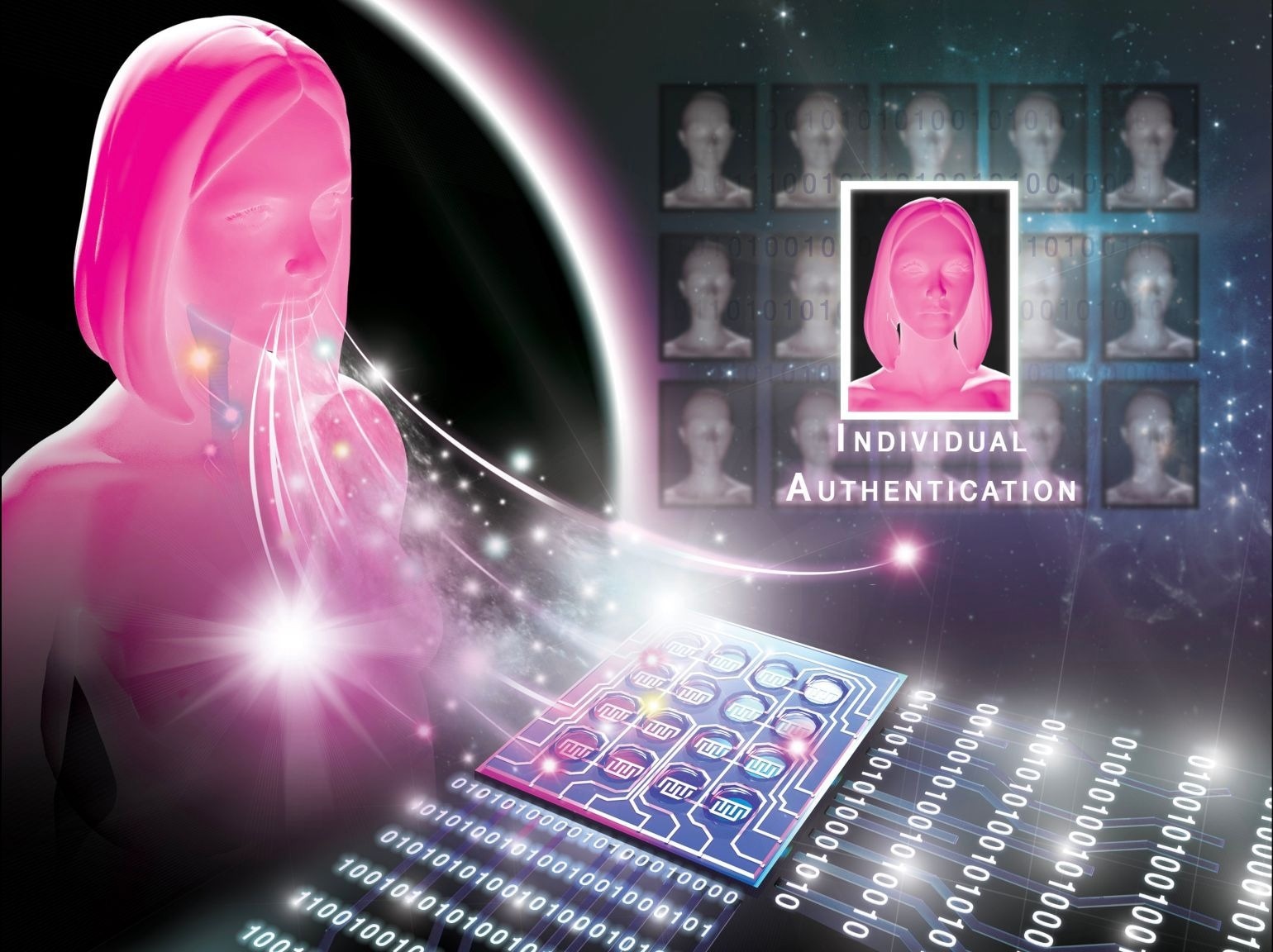Similar to fingerprint and iris scans, biometric authentication is an essential factor in any spy movie, and attempting to bypass those security measures is frequently one of the main plot points. However, nowadays the technology is not restricted to spies, as facial recognition and fingerprint verification are standard features on numerous phones.
 Breath odor-based individual authentication using an artificial olfactory sensor could become possible in the near future as represented by this artist’s rendering. Image Credit: Institute for Materials Chemistry and Engineering, Kyushu University
Breath odor-based individual authentication using an artificial olfactory sensor could become possible in the near future as represented by this artist’s rendering. Image Credit: Institute for Materials Chemistry and Engineering, Kyushu University
Currently, scientists have created a new prospective odorous option for the biometric security toolkit: human breath. In an article published in Chemical Communications, scientists from Kyushu University's Institute for Materials Chemistry and Engineering, in partnership with the University of Tokyo, have engineered an olfactory sensor that can identify individuals by examining the compounds in their breath.
Integrated with machine learning, this ‘artificial nose,’ designed with a 16-channel sensor array, was capable of authenticating up to 20 people with an average precision of over 97%.
In this era of information and technology, biometric authentication is an important way to protect prized assets. From the typical suspects of fingerprints, voices, palm prints, and faces to the less prevalent options of finger veins and ear acoustics, there is a range of biometrics that devices can use to identify you.
These techniques rely on the physical uniqueness of each individual, but they are not foolproof. Physical characteristics can be copied, or even compromised by injury. Recently, human scent has been emerging as a new class of biometric authentication, essentially using your unique chemical composition to confirm who you are.
Chaiyanut Jirayupat, Study First Author, Institute for Materials Chemistry and Engineering, Kyushu University
One such element has been percutaneous gas — compounds produced by human skin. However, these approaches have their limitations because the skin does not create an adequately high concentration of volatile compounds for devices to detect.
Therefore, the researchers chose to test if human breath could be used in its place.
The concentration of volatile compounds from the skin can be as low as several parts-per-billion or trillion, while compounds exhaled from the breath can go as high as parts-per-million. In fact, human breath has already been used to identify if a person has cancer, diabetes, and even COVID-19.
Chaiyanut Jirayupat, Study First Author, Institute for Materials Chemistry and Engineering, Kyushu University
The researchers started by examining the breath of subjects to learn which compounds could be assessed for biometric authentication. A total of 28 compounds were established to be feasible options.
Contingent on this, they created an olfactory sensor array with 16 channels, each could identify a particular range of compounds. The sensor data was then transmitted into a machine learning system to examine the composition of each individual’s breath and develop a profile that would be used to identify one individual from another.
After testing the device with breath samples from six individuals, the team discovered it could recognize individuals with an average precision of 97.8%. This high level of precision remained steady even when the sample size was expanded to 20.
This was a diverse group of individuals of differing age, sex, and nationality. It's encouraging to see such a high accuracy across the board.
Takeshi Yanagida, Study Lead, Institute for Materials Chemistry and Engineering, Kyushu University
Nevertheless, he states that further work is necessary before it can be fitted into the next smartphone.
"In this work, we required our subjects to fast six hours before testing," concludes Yanagida. "We've developed a good foundation. The next step will be to refine this technique to work regardless of diet. Thankfully, our current study showed that adding more sensors and collecting more data can overcome this obstacle."
Journal Reference:
Jirayupat, C., et al. (2022) Breath odor-based individual authentication by an artificial olfactory sensor system and machine learning. Chemical Communications. doi.org/ 0.1039/D1CC06384G.